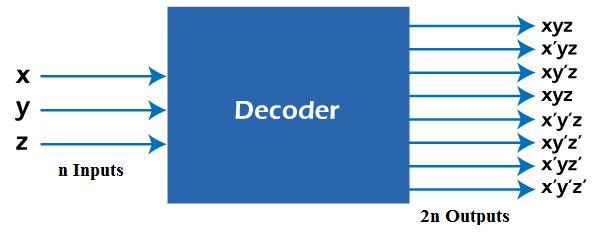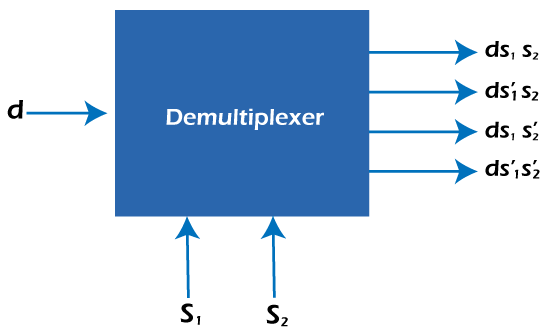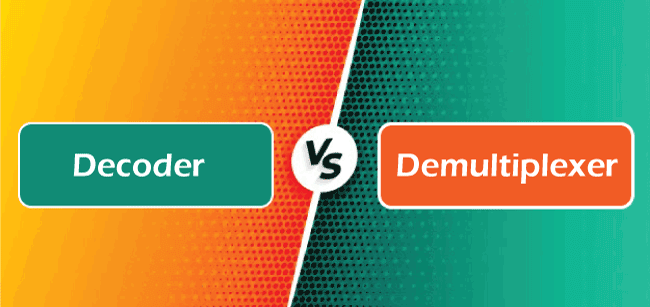Difference between Decoder and DemultiplexerBoth the decoder and the demultiplexer are combinational logic circuits. The primary distinction between these combinational logic circuits is that a decoder translates input streams from one format to another. In contrast, the demultiplexer routes data from one input line to any of the various output lines. A decoder is an example of a type of demultiplexer. Furthermore, a decoder is a demultiplexer that doesn't have a data input stream and has inputs rather than select lines. When enable is utilized in a decoder circuit, it closely resembles a demultiplexer. In this article, you will learn about the difference between Decoder and Demultiplexer. But before discussing the differences, you must know about Decoder and Demultiplexer. What is Decoder?The decoder is a combinational logic circuit that decodes the information, data, and documents. It has an n number of input lines and a 2n number of output lines. In every possible input circumstance, only one of the multiple output signals will generate the logic one. As a result, this n-to-2n decoder may also be described as a min-term generator, where each output corresponds to exactly one minterm. 
Usually, the line decoders are classified into three types: 2-to-4, 3-to-8, and 4-to-16. It is also utilized to detect a specific set of bits at the input side, and it may distinguish one or more n-bit combinations using an n-to-2n configuration. What is Demultiplexer?The demultiplexer is similar to the decoder but contains select lines. It is utilized to distribute a single input across numerous output lines. It collects data from a single input signal and distributes it across the specified number of output lines. It comprises data input lines, select lines, and output lines. 
It has one input, n selection lines, and a maximum output of 2n. The input would be connected to one of the outputs based on the selection line values. There would be 2n possible combinations of 0's and 1's because there are 'n' selection lines. As a result, each combination may only select one output. De-Multiplexer is also known as De-Mux. Main Differences between Decoder and Demultiplexer
Here, you will learn the main differences between Decoder and Demultiplexer. Some main differences between Decoder and Demultiplexer are as follows:
Head-to-head comparison between Decoder and DemultiplexerHere, you will learn the head-to-head comparisons between Decoder and Demultiplexer. The main differences between Decoder and Demultiplexer are as follows:
ConclusionDecoders and demultiplexers are two combinational logic circuits mainly utilized in many apps to translate data or control signals. Decoders are similar to demultiplexers but with some additional features. The decoder lacks selection lines, whereas the demultiplexer contains selection lines. These two concepts are critical for understanding digital circuits. These concepts are utilized in telecommunication networks to increase signal performance and decrease delays.
Next TopicDifference between
|
 For Videos Join Our Youtube Channel: Join Now
For Videos Join Our Youtube Channel: Join Now
Feedback
- Send your Feedback to [email protected]
Help Others, Please Share










